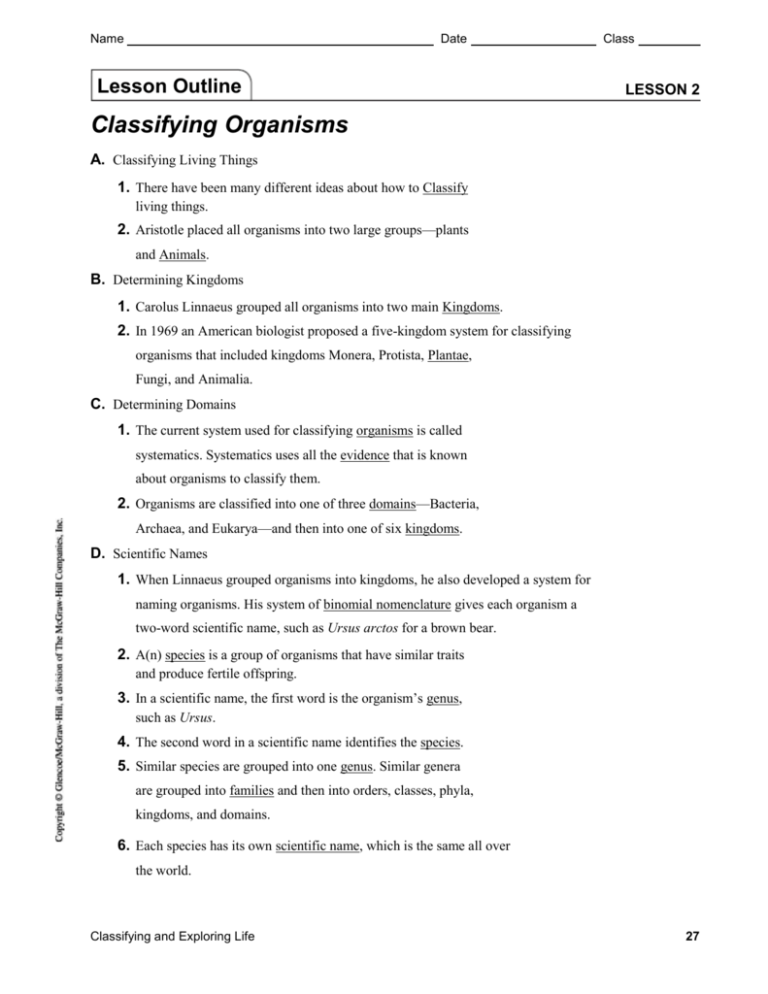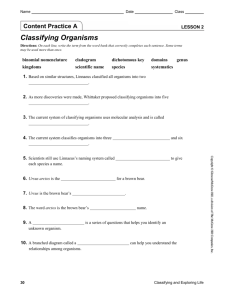Classifying Organisms: Lesson Outline
advertisement

Name Date Lesson Outline Class LESSON 2 Classifying Organisms A. Classifying Living Things 1. There have been many different ideas about how to Classify living things. 2. Aristotle placed all organisms into two large groups—plants and Animals. B. Determining Kingdoms 1. Carolus Linnaeus grouped all organisms into two main Kingdoms. 2. In 1969 an American biologist proposed a five-kingdom system for classifying organisms that included kingdoms Monera, Protista, Plantae, Fungi, and Animalia. C. Determining Domains 1. The current system used for classifying organisms is called systematics. Systematics uses all the evidence that is known about organisms to classify them. 2. Organisms are classified into one of three domains—Bacteria, Archaea, and Eukarya—and then into one of six kingdoms. D. Scientific Names 1. When Linnaeus grouped organisms into kingdoms, he also developed a system for naming organisms. His system of binomial nomenclature gives each organism a two-word scientific name, such as Ursus arctos for a brown bear. 2. A(n) species is a group of organisms that have similar traits and produce fertile offspring. 3. In a scientific name, the first word is the organism’s genus, such as Ursus. 4. The second word in a scientific name identifies the species. 5. Similar species are grouped into one genus. Similar genera are grouped into families and then into orders, classes, phyla, kingdoms, and domains. 6. Each species has its own scientific name, which is the same all over the world. Classifying and Exploring Life 27 Name Date Lesson Outline continued E. Classification Tools 1. A(n) dichotomous key is a series of descriptions arranged in pairs that can be used to identify an unknown organism. The chosen description leads to another pair of descriptions or to the identification of the organism. 2. A(n) cladogram is a branched diagram that shows the relationships among organisms. New characteristics appear before each branch. Class











